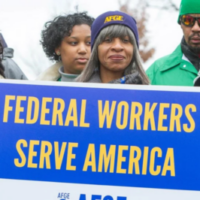Last fall, drivers in Seattle began a campaign to pass the country’s first-ever ordinance allowing Uber, Lyft and other for-hire vehicle drivers to unionize. A few hours after driver Takele Gobena spoke at a press conference to launch the campaign, Mr. Gobena was “deactivated” — Uber-speak for fired. Public outcry got him his job back, and in December, over Uber’s objections, the ordinance passed unanimously. It took effect in late January.
But Uber wasn’t done yet. Ten days ago, Quartz reported that Uber customer service reps were instructed to call thousands of Seattle drivers and read them an anti-union message crafted by the company. According to Quartz, the script ends with, “this is simply a case where collective bargaining and unionization do not fit the characteristics of the work.” As is typical for the company, the script argues Uber is so new and innovative that workers aren’t its employees and really don’t need the protection of labor laws.
So far, Uber is losing that argument. Along with the Seattle City Council, a federal judge has said that Uber is assumed to be the employer of the workers, and state agencies in California, Oregon and Alaska have considered Uber the “employer” of its drivers.
Meanwhile, in mid-February, Uber deactivated another one of the leaders of the unionization movement. Peter Kuel, who also spoke at the launch press conference, and is on the Leadership Council of the App-Based Drivers’ Association, lost his job for reasons that seemed to shift as the days go by. He reported that Uber first claimed he hadn’t completed a background check — but he had. Then he was told it was about his driving record. But he hadn’t caused any traffic accidents. Like many full-time Uber drivers, and many of the rest of us, Kuel supports a family. He says, “I want to work. I am supporting my daughter, my parents. I have a car payment and a student loan and my rent.”
Last Thursday, the US Chamber of Commerce got into the union-busting game, suing to block the Seattle ordinance that allows Uber and taxi workers to organize and bargain with the companies. And Friday, the news broke that Uber is refusing to comply with a subpoena from the National Labor Relations Board meant to determine whether it is an employer under that law.
Given all this backlash, you might imagine drivers are less interested in joining a union or association. But that’s not the case. Drivers are standing up and fighting for better jobs, and their communities are supporting them. Peter Kuel was rehired after a Seattle council member and fellow union supporters marched on the local Uber office. And drivers are fighting back not only in Seattle, but also across the country. They are building driver associations and networks in cities that are major markets for Uber. On a recent Monday, hundreds of Uber drivers rallied outside the company’s Queens, New York headquarters, protesting wage cuts that have been imposed in more than 100 cities across the country. They did the same in San Francisco on Super Bowl Sunday. Back in New York, unions are coordinating a strategy aimed at organizing Uber drivers at LaGuardia Airport.
The New York Taxi Workers Alliance, which pioneered the model for organizing for-hire drivers, has started a unity campaign that includes both Uber and taxi drivers. Over the course of nearly two decades, the Taxi Workers Alliance has built a membership 18,000 drivers strong, and has delivered real gains to its members, including $15 million in disaster aid following 9/11. Now its members are organizing to stop a potential plan by New York Governor Andrew Cuomo to take away New York City’s ability to regulate transportation network companies. On February 17th, the Alliance’s San Francisco members showed up en masse at a state legislative hearing focused on leveling the playing field between taxi and Uber drivers.
The so-called “new” economy looks a lot like the old economy, where well-capitalized companies make money by scrimping on workers’ pay, and do everything they can to keep workers from joining together and speaking out for change. You don’t need an app to see that this modern, on-demand company is guilty of old-fashioned union-busting.
A version of this article was first published on medium.com.



